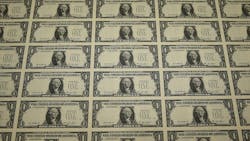Industrial companies that have loaded up on cheap debt to boost share prices may need to reconsider how far they’re willing to push their credit ratings, a Bloomberg Intelligence report shows.
Shares for manufacturers with high-yield grades have generated annualized returns that are negative or just barely positive over the last 10 years, the report found. Among investment-grade borrowers, companies just above the junk cut-off line performed worse than those rated four to six levels above.
“Industrials with lower leverage outperform over the long-term,” BI Analyst Joel Levington said by e-mail. When times get tough, these companies may be better able to finance acquisitions and continue investing in their businesses, he said. "The message is clear."
The findings underscore the flip side of the recent debt boom. Companies that borrow more are increasing a measure of profitability known as return on invested capital, but may leave their balance sheets and cash flow more vulnerable by increasing their financial risk, Levington said.
There are exceptions. For the highest-rated companies, taking on more debt can boost returns for shareholders. Industrial companies with an A rating have the highest annualized stock returns of all investment-grade ratings classes, ahead of both AA and BBB rated companies, according to BI data.
It may make sense for some investment-grade companies to borrow more, Levington said. Many A rated industrial companies have a high capacity to take on more debt, according to BI data, giving them the flexibility to raise new funds for acquisitions and buybacks, he said.
Leveraging Up
Decades of falling interest rates in the U.S. have allowed a wide range of companies to borrow ever larger amounts of money. Manufacturers including 3M Co. and United Technologies Corp. have boosted their debt levels in recent years, for example.
Cheap borrowing costs have emboldened at least some issuers to accept lower credit ratings. In 2013, JPMorgan Chase & Co. analysts found that just 10 percent of U.S. companies had ratings of at least AA-, one of the top four credit grades, compared with 25 percent in 1993. Meanwhile, in 2013, 43 percent of borrowers were in the BBB range, one to three steps above junk, compared with 21 percent two decades before. The bank looked at 169 borrowers in the Standard & Poor’s 500 index.
Companies are “willing to live with a little bit lower credit rating,” Diane Vazza, S&P Global Ratings head of global fixed income, said by phone, “because it’s a much more attractive opportunity for them in terms of managing their business.”
“It’s a trade-off,” Vazza said. “It’s a willingness to take on additional debt, perhaps in this low interest-rate environment at incremental cost, and balance that with the investment needs of the company.”
About the Author
Bloomberg
Licensed content from Bloomberg, copyright 2016.
